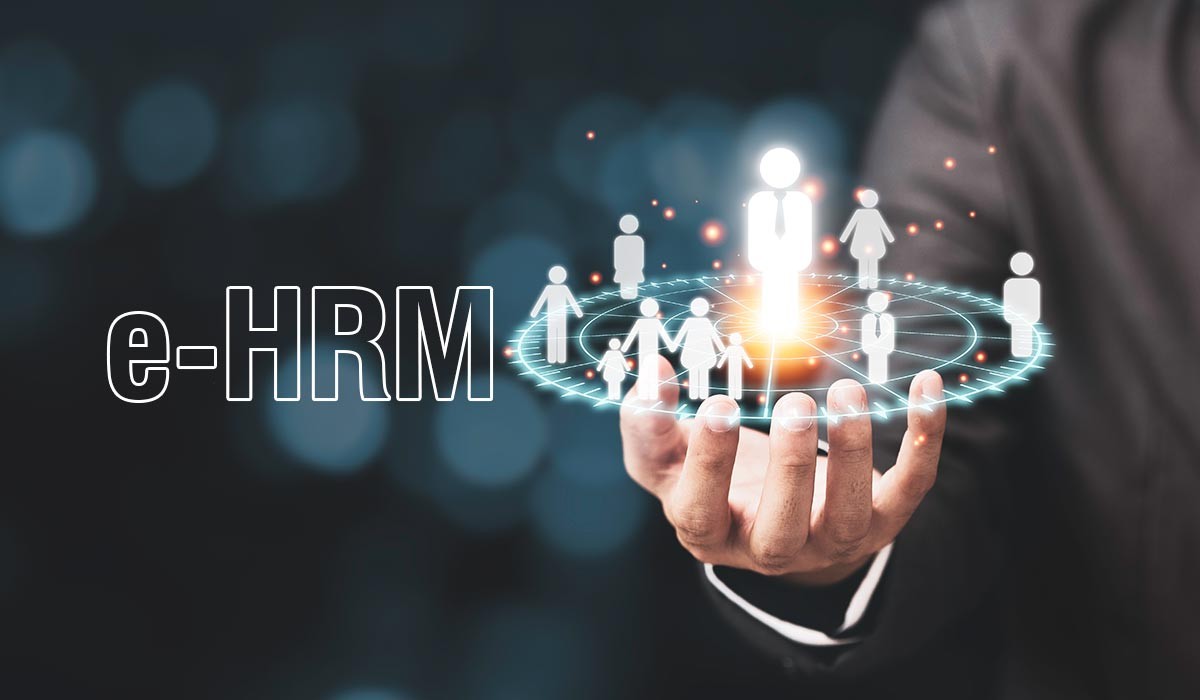
When Information technology techniques are used to implement Human Resource activities for networking and supporting for two or more people, it is known as e-HRM. It stands for Electronic Human Resource Management. It is a new concept in the field of HRM but totally different from the virtual HRM or Human resource information system (which is used in inter-department HR functions for improving HR department). E-HRM is used to improve services offered to employee and management not the business. Intranet is used to provide HRM services to the employees.
Putting in simple words, e-HRM is implementation of policies, practices and strategies in organization through the medium of web-based technologies. The e-HRM is mainly developed for human resources managers who have to handle the work force, examine changes and collect the information needed in decision-making.
Three tiers of E-HRM:
There are mainly three types of E-HRM: Relational, Operational, and Transformational. In Operational e-HRM, administrative functions - payroll and employee personal data are managed. Relational E-HRM involves support of business processes by means of training and recruitment. E-HRM has an additional goal in comparison to traditional human resource management which is the enhancement of the global orientation of human resource management.
In Operational e-HRM, administrative functions such as payroll management are efficiently handled. Payroll involves compensating employees for work completed within a specific period, calculating taxes and deductions, arranging payments, and maintaining compensation records. Using the best payroll software can streamline this process, ensuring accuracy and compliance with legal requirements.
The basic three concept of Human resource management are:
- I) Maintaining cost effectiveness
- II) The enhancement of service for internal customer
III) Addressing the tactics of the business
It can also be defined as a way to provide service to employees like e-learning, e-recruitment, e-selection and e-management of employees. E-HRM is still a developing concept and yet not being implemented massively but in future it would be successful in cutting cost of the organisation and saving time of HR department. It helps HR department in spending less time on operation and more on implementing strategies of an organisation. It would lead to less burden of work and thus fewer requirements of staff and thus enabling organisation to save money.
Anyone who is trying to get rid of difficult concerns of HRM can usually think of not something else. Many HRM Assignment Help experts and professionals will counsel you the secret to overcome your queries and help you in your academics in an effective manner.
Goals:
E-HRM is considered as offering the potential to enhance the services to HR department clients (that is, both employees and management), develop efficiency and cost efficacy in the HR department and let HR to become a strategic associate in accomplishing the organisational goals.
It also works as a system using which employees can get information on human resource policies and also use e-HRM for their personal growth like applying for new jobs and promotions. E-HRM has some other names also like Digital Human Resource Management and Web Based Human Resource Management. This concept is being used since 1990s. As the face to face HRM activities are being replaced by e-HRM, the possibilities of use of IT in Hr are field are limitless. It comparatively gives more creativity to employees than the present job requires. It also builds up a transparent environment as it does not have human emotions and so cannot be blamed for partiality.
Advantages of E-HRM:
1) E-HRM encompasses the potential to sway both efficiency and usefulness.
2) Effectiveness can be acquired by dropping the cycle times for meting out paper-work, increasing data accuracy and reducing surplus HR.
3) A higher internal profile for HR leading to an enhanced work culture.
4) This leads to a more transparent system.
5) Substantial reduction of the administrative load.
6) Offers essential assistance to the administration of human resources and all other fundamental and support processes within the organization.
7) A more powerful work-flow in the business development, productivity and employee satisfaction.
8) Decentralization of the HR responsibilities.
E-HRM: A boon or ban??
The utilization of technology and information systems have been a blessing in disguise in building up the business process more efficient all along by the saving cost and forming the tasks more precise and less time taking. Nowadays, most of the business organizations prefer to make use of state of art applications and its technological infrastructure. However, the utilizations of technological update have profited the business however it can be ruinous as the easily accessible data can be gathered devoid of approval and can be misused. As well at times the inflexible mindsets of people can pretence a great challenge to the application of E-HRM. Thus the mindsets of employees and managers require to be changed, they have to understand and be familiar with the value of E-HRM and its tools.
The conversion of traditional HR to E-HR where it not merely plays the role of an administrative specialist, however as well becomes the employee winner, a change mediator and a business partner has been majorly possible by the utilization of technological tools and applications, that is, E-HRM. By the diverse benefits and little demerits it can be suggested that all the organizations make use of E-HRM technology, that assures to offer a helpful, efficient and enhanced performance via this e-HRM technology despite of all obstructions it has to face.


